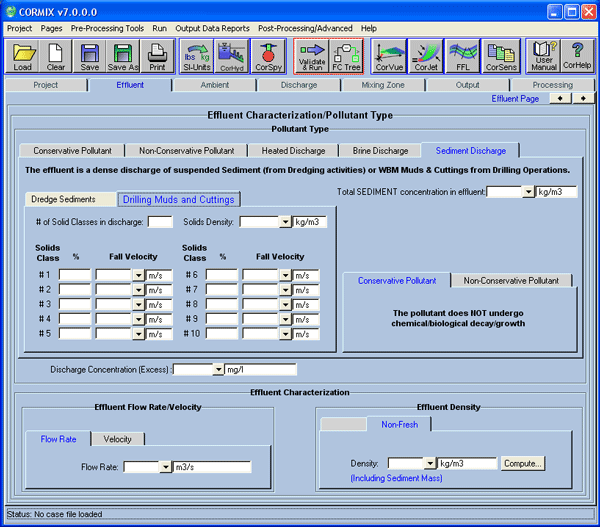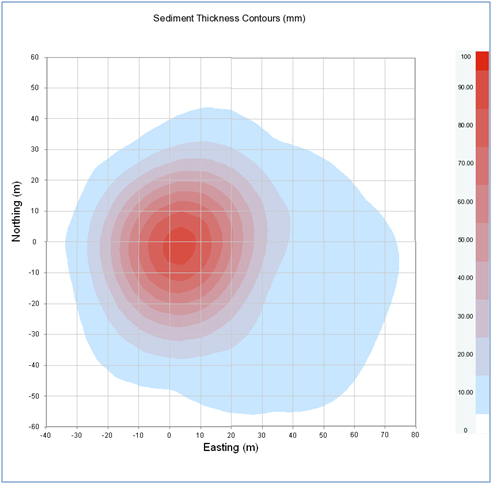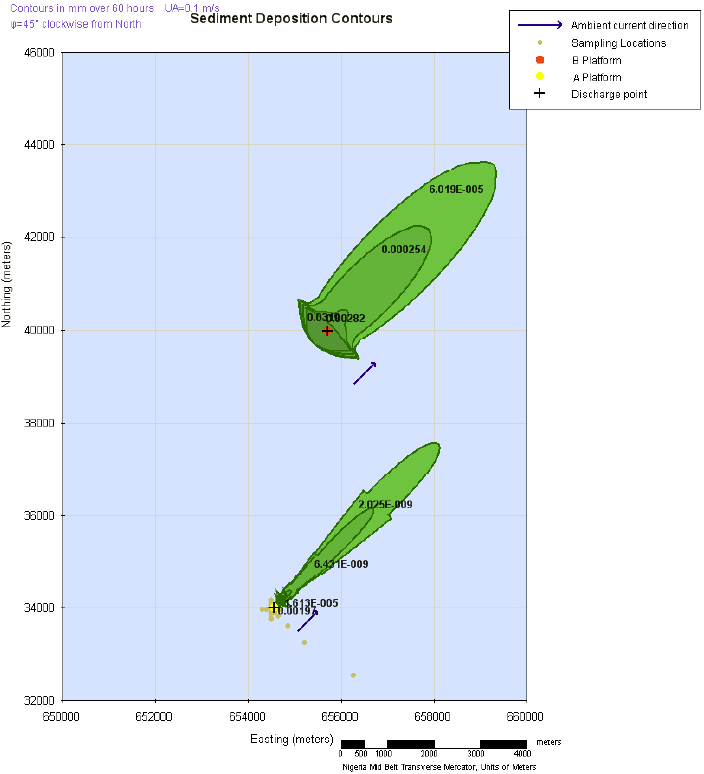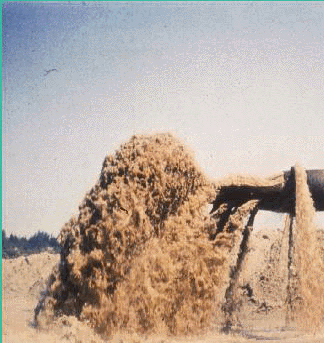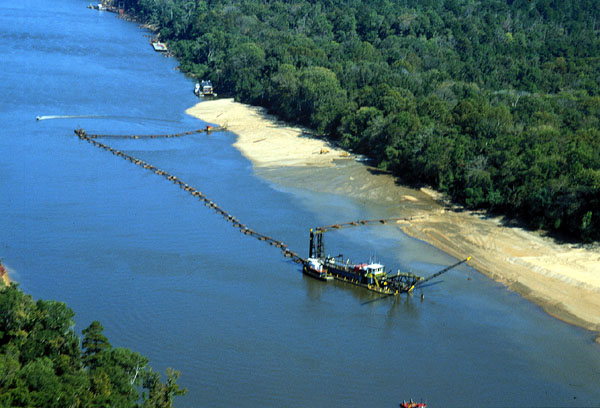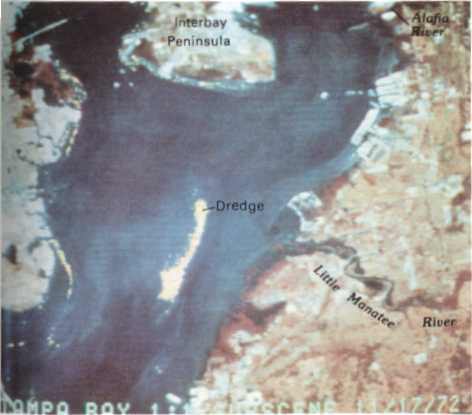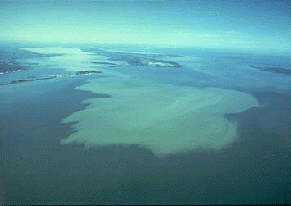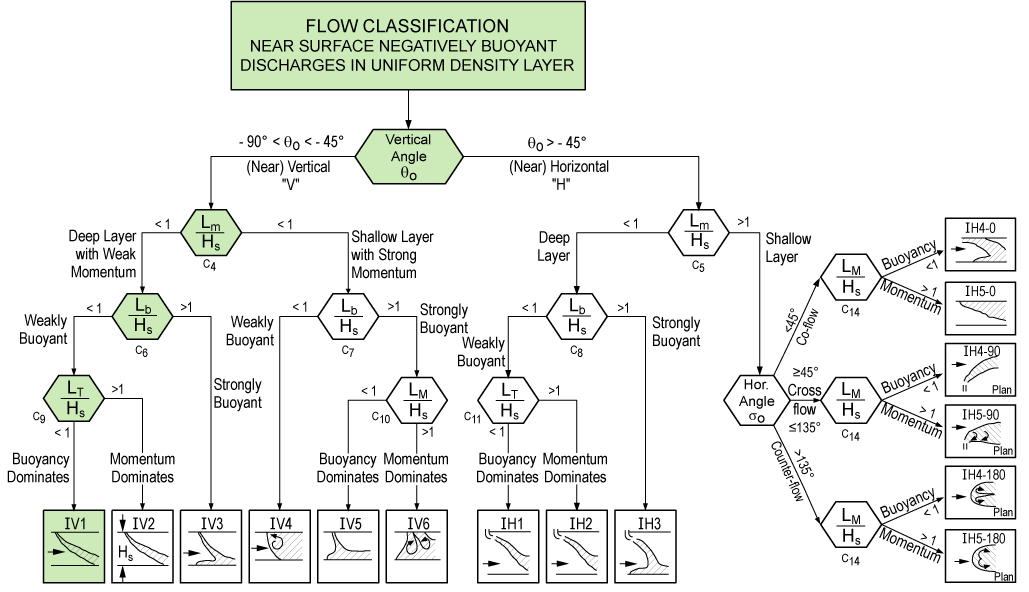CORMIX - GTS is the advanced tools - sediment - software release version for state-of-the art
documentation and analysis of mixing zones,
outfall specification, design optimization,
and environmental impact assessment, analysis and visualization.
The system models the discharge source material within the resulting density current.
CORMIX - GTS predicts the water column suspended sediment and tracer concentrations in addition to dimensions of the
resultant disposal plume.
The GTS - Advance Tools Sediment release, extends the applicability of CORMIX to negatively buoyant
with suspended sediment loads.
Modeling emphasis is placed on:
- Trajectory and shape of the discharge plume
- Water column concentrations of suspended sediments, solids and discharge components
- Sediment accretion rate
- Accumulation of discharged solids on the ambient bottom, deposit geometry and spatial extent.
The CORMIX - GTS functionality was based on the capability of the legacy DOS D-CORMIX and CD-CORMIX models.
The CORMIX - GTS uses new/updated rulebase and the DHYDRO (hydrodynamic module) for the analysis of dense and/or
sediment discharges in coastal environments. DHYDRO simulates dense brine and/or sediment discharges from single port,
multiport diffuser, or surface discharges.
CORMIX v12.0GTS has new and improved capabilities for modeling dredging sediments from dredge operations and drilling
muds and cuttings from offshore oil and gas exploration and production operations.
CORMIX - GTS was developed in part thru cooperation with USEPA, the
US Army Corps of Engineers and the US Bureau of Reclamation.
The model assists with the water quality analysis and prediction from suspended sediment discharges.
An example application is dredge disposal sources of suspended sediment in continuous pipeline dredging
operations often referred to as "flow lane" or "in-water" disposal.
It models water column dilution and suspended concentration as well as bottom accretion rates.
Another application is produced water discharge modeling from offshore oil and gas facilities.
CORMIX has been used for drill cutting and muds discharge modeling. The model will provide bottom deposition data and associated plots.
This rule-based expert system for turbulent buoyant jet mixing behavior covers a broad
range of discharge and environmental conditions typically associated with continuous dredge disposal
and drill cuttings and muds discharge from offshore operations.
Suspended Sediment Particle Size Classes:
CORMIX - GTS includes the effects of particle settling on plume behavior, with emphasis on
the resulting plume density current.
The model accounts for settling of five particle size fractions, when using the default "Dredge Sediments" option:
- Chunks
- Sand
- Coarse Silt
- Fine Silt
- Clay
Support for Drill Cuttings & Mud Discharge Modeling:
The additional modeling support for drilling muds and cuttings discharges for the offshore oil and gas industry is available under the new "Drilling Muds and Cuttings" option in the CORMIX UI.
New capabilities include:
- Ability to directly specify upto 10 solids size classes in the effluent discharge
- Ability to specify the corresponding distribution (as a %) by volume fraction for each of the classes.
- Ability to directly specify the particle fall velocities for upto 10 solids classes in the effluent discharge
- Ability to specify a custom particle size denstiy
- Tabular output specifying the plume properties, sediment mass fluxes remaining and concentration
- Graphical output of suspended sediments in the water column
- Graphical output of bottom deposition contours
- Graphical output of bottom deposition contours on a user specified grid and coordinate system
- Comma separated tabular output file of the sediment deposition thickness along the plume trajectory
The user can estimate fall velocities from particle-size distribution, Stokes Law or measured data from column studies.
These new capabilities have been adapted from Nedwed, Tim (2004), "Best Practices for Drill Cuttings & Mud Discharge Modeling", Society of Petroleum Engineers Inc. Publication - SPE 86699,
The Seventh International Conference on Health, Safety, and Environment in Oil and Gas Exploration and Production held in Calgary, Alberta, Canada, 29-31 March 2004.
The new CorPlot graphing tool will provide detailed deposition plots based on CORMIX simulation results from a drill cuttings and muds discharge modeling study.
CorPlot also provides the following plots based ont he CORMIX simulation:
- Concentration vs. Plume Centerline Downstream Distance
- Concentration vs. Plume Centerline Trajectory
- Dilution vs. Plume Centerline Downstream Distance
- Dilution vs. Plume Centerline Trajectory
- Concentration Isoline plots
- Dilution Isoline plots
- Depositon plots on user specified grid and coordinate system
It is often necessary to be able to model varying ambient current directions for offshore drilling operations. This can be achieved using
CorTime. By combining the capabilities of the CorTime application and the new features in CORMIX v12.0GTS, one can
perform a comprehensive drill cuttings and muds discharge modeling study for offshore drilling operations.
Some of the special features of CORMIX - GTS include:
- Above surface discharge conditions with or without deflector plates.
- Negatively buoyant surface discharges.
- Bottom density currents with particle settling.
- Effect of bottom slope on plume behavior.
- Particle deposition rates.
- Available TOXSPOT post-processor (under development) for evaluation of metals and organic contamination of dredge spoils deposits.
USEPA had completed a Science Advisory Board (SAB) report of D-CORMIX and has
recommended additional development and validation.
Within the USA, all Federal, State, Local, and Tribal regulators can get special discounted pricing.
Please contact us
to obtain information on current government pricing and licensing options.
The latest/current supported version is CORMIX v12.0GTS
Please review the Feature Comparison Table for features available in CORMIX v12.0GTS - VIEW



